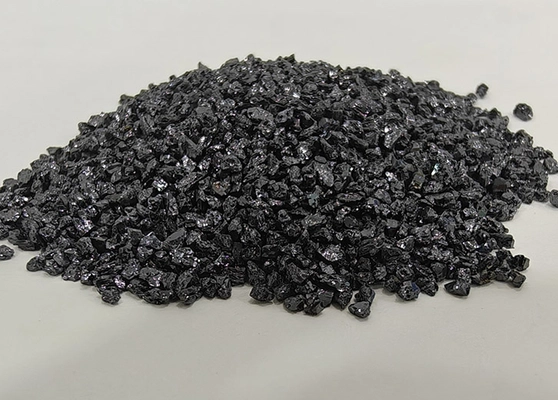Brown fused alumina (BFA) is widely used in abrasive and refractory industries due to its hardness, thermal stability, and chemical resistance. While it is commonly considered an insulating material, its electrical conductivity can vary significantly depending on several influencing factors. This article explores the key factors that affect the electrical conductivity of BFA abrasives.
Chemical Composition
Aluminum Oxide Content
The primary component of BFA is aluminum oxide (Al₂O₃), which is inherently an insulating material. Generally, the higher the alumina content, the lower the electrical conductivity of the material. However, Al₂O₃ is not the sole determinant—impurities also play a crucial role.
Impurity Elements
BFA typically contains small amounts of iron (Fe), silicon (Si), and titanium (Ti) as impurities. Metallic elements, especially iron, significantly contribute to increased conductivity. Thus, a higher concentration of metallic impurities, particularly iron, can lead to a higher electrical conductivity. Both the type and concentration of impurities determine the overall conductive behavior of BFA.
Physical Characteristics
Particle Size and Shape
The particle size and morphology of BFA abrasives can influence electrical conductivity. In general, finer BFA particles may exhibit slightly better conductivity due to a larger specific surface area, which facilitates more electron migration pathways. However, this effect is relatively minor under typical usage conditions.
Surface Condition
The surface integrity of BFA particles plays a significant role. Clean, well-formed crystals with fewer surface defects tend to have better conductivity. Conversely, surface defects, absorbed moisture, or contamination can negatively impact the conductivity.
Environmental Conditions
Temperature and Humidity
Both temperature and humidity can influence the movement of ions and electrons within BFA particles. Elevated temperatures or increased humidity generally enhance conductivity by promoting charge carrier mobility within the material.
Contact with Other Materials
When BFA comes into contact with conductive materials (such as metals or graphite), its apparent conductivity can be affected. The type of contact material, contact surface area, and interaction dynamics may alter the measurement or behavior of conductivity.
Manufacturing Process
The production method of BFA is a critical factor affecting its electrical conductivity. Processes such as air-washing, magnetic separation, crushing, and sieving all contribute to the final purity and morphology of the product. If impurities like iron are not adequately removed or if particle uniformity is not optimized, the resulting product may exhibit unpredictable conductive properties.
Conclusion
In summary, the electrical conductivity of brown fused alumina is not fixed but is influenced by multiple interrelated factors, including:
- Chemical composition (especially iron content)
- Particle size and surface condition
- Ambient temperature and humidity
- Contact with conductive materials
- Manufacturing and post-processing techniques
Studies from accredited testing laboratories have confirmed that the iron content in BFA has a strong correlation with electrical conductivity. Higher iron levels result in greater conductivity, making iron one of the most critical factors in determining the electrical behavior of BFA abrasives.
By understanding and controlling these variables, manufacturers and end users can better predict and utilize the electrical properties of BFA in specific industrial applications.
Request a Quote or Sample
Popular Products
Grünes Siliziumkarbid
View DetailsSchwarzes Siliziumkarbid
View Details